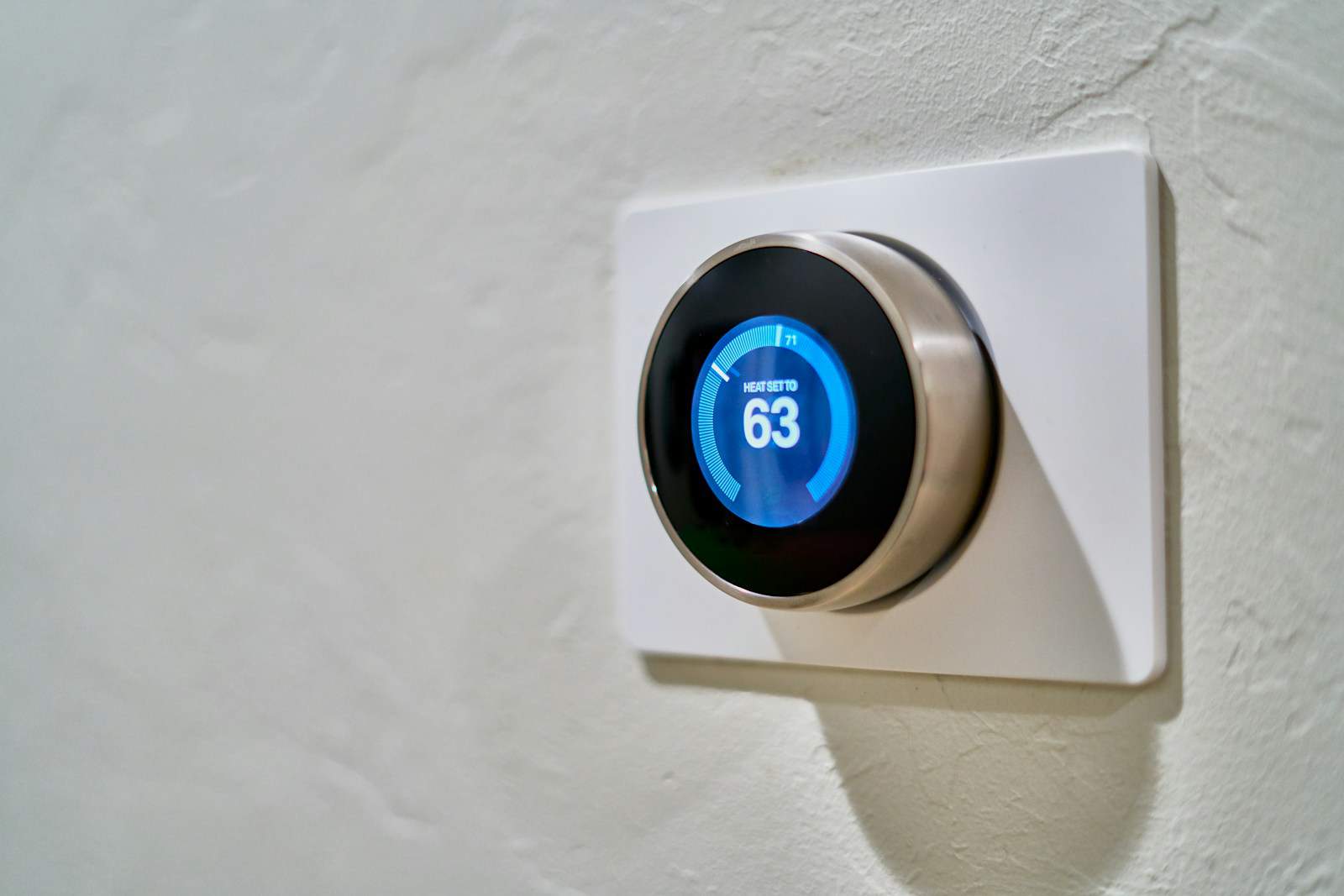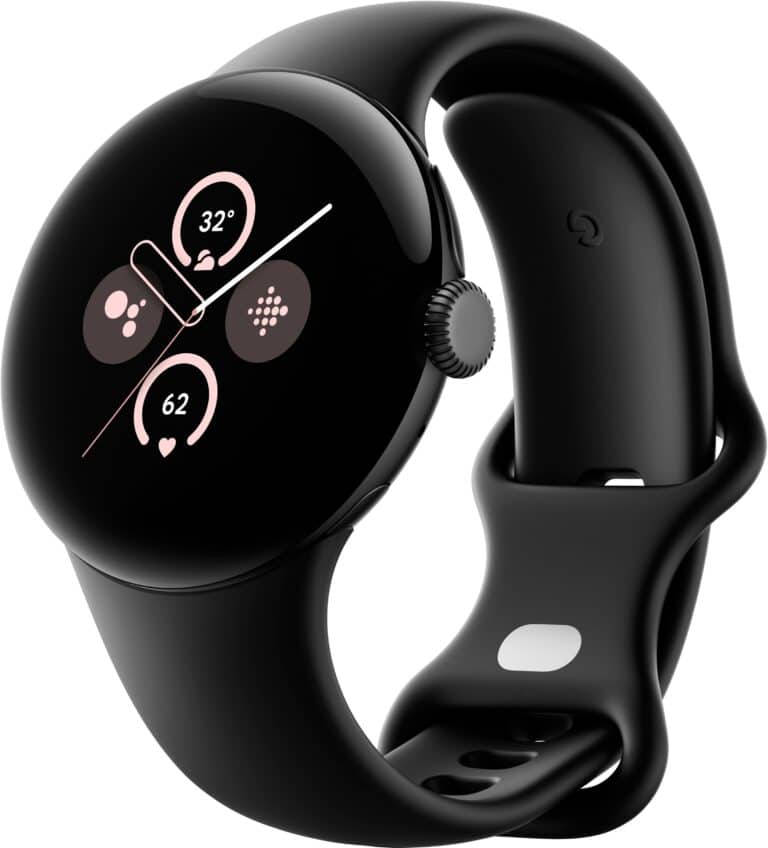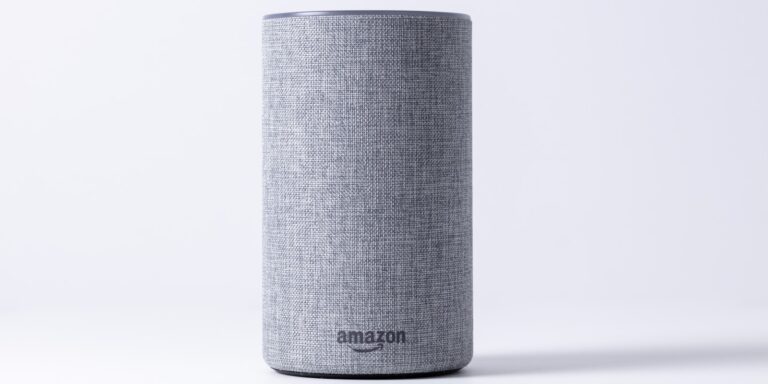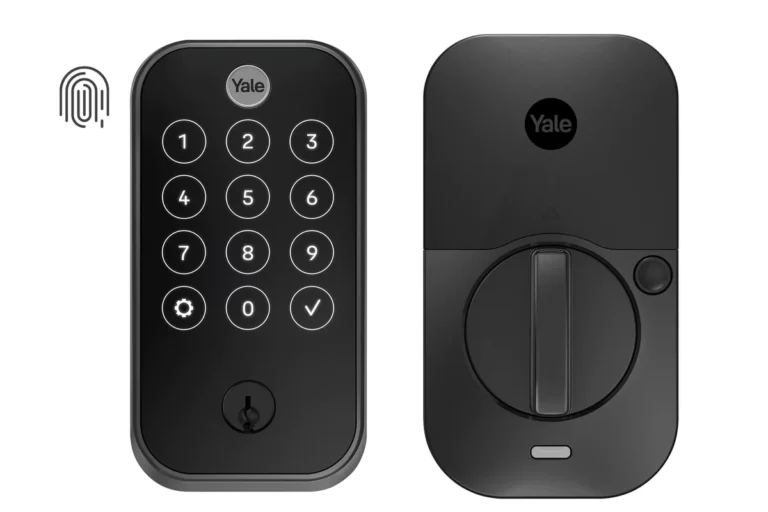Electric bills are a significant monthly expense for many households. With the cost of electricity rising, consumers are exploring solutions to reduce their energy usage efficiently. Smart home devices have emerged as a popular answer to this challenge. These devices offer advanced features that provide more control over home energy consumption. Programmable thermostats, energy-efficient appliances, LED lighting, and Energy Star certified products are just a few examples that can contribute to substantial savings on electric bills by optimizing energy use in our homes.
Devices Proven To Help Save On Energy Bills
| Device | How It Saves Energy | Typical Savings Potential | Other Benefits |
|---|---|---|---|
| Smart Thermostats (like Nest, Ecobee) | Learn your temperature preferences and automatically adjust throughout the day to prevent heating/cooling an empty home. Remote control via apps. | 10-12% on heating, 15% on cooling costs* | Increased comfort, convenience, detailed energy usage reports. |
| LED Light Bulbs | Use up to 75% less energy and last much longer compared to traditional incandescent bulbs. | Varies greatly based on usage, but significant savings over time. | Wide range of colors and brightness now available. |
| Energy Monitors (like Sense, Emporia) | Track real-time energy usage of your entire home or individual appliances, pinpointing energy-hogging devices. | 5-15% depending on how you utilize the information | Helps identify appliance malfunctions or wasteful habits. |
| Smart Power Strips | Cut “phantom power” from devices in standby mode. Can be scheduled or remotely turned off. | Up to 10% of annual bill can be standby power | Protects devices from power surges. |
| Programmable Water Heater Timer | Reduces water heating during periods of low use; some models have vacation modes. | Potential savings depend heavily on usage patterns | Prevents wasting energy on heating water you don’t need. |
Important Notes:
- *Savings figures are estimates and can vary.
- Consider installation costs and look for rebates when purchasing these devices.
- Combining several devices will have a greater impact on your energy bill.
Understanding one’s energy consumption is crucial in identifying areas where savings can be made. Devices like smart thermostats can learn user patterns and adjust heating and cooling systems to operate more efficiently. LED lights consume less power and last longer than traditional bulbs. Further, energy-saving gadgets such as smart power strips and solar-powered devices lower the electrical demand, offering not only cost benefits but also helping to reduce one’s carbon footprint.
Key Takeaways
- Implementing energy-efficient devices can lead to significant savings on electricity costs.
- Familiarity with personal energy use is essential for targeted reductions in consumption.
- Advances in technology offer user-friendly solutions to optimize energy efficiency at home.
Top Devices that Can Lower Your Energy Bill
Here’s a detailed breakdown of the top devices designed to help you become more energy-efficient and save money on your electricity bills:
1. Smart Thermostats

- What it is and What it Does: Smart thermostats are programmable thermostats on steroids. They go beyond setting a simple schedule by learning your temperature preferences and routines. These clever devices can automatically adjust the temperature throughout the day to ensure your home is comfortable when you’re there and energy-saving when you’re away. They also allow for remote control via smartphone apps, so you can adjust the temperature from anywhere, no matter if you’re at work or on vacation.
- How it Lowers Electricity Consumption: By automatically adjusting the temperature based on your habits and occupancy, smart thermostats prevent unnecessary heating or cooling cycles. This can significantly reduce your energy use, with studies suggesting potential savings of 10-12% on heating and 15% on cooling costs. Additionally, smart thermostats provide detailed energy usage reports, helping you identify areas for further optimization.
- Product Examples:
- Nest Learning Thermostat: This popular option by Google uses Nest Sense technology to learn your routines and preferences. It can also detect when you’re home and automatically adjust the temperature for optimal comfort.
- Ecobee Smart Thermostat Enhanced: This feature-rich model boasts a room sensor to ensure consistent temperature throughout your home. It also works with Alexa, Google Assistant, and Apple HomeKit for seamless smart home integration.
2. LED Light Bulbs
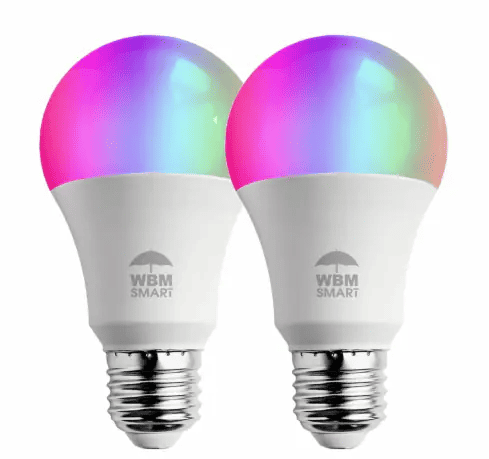
- What it is and What it Does: Light-emitting diode (LED) light bulbs are a revolutionary replacement for traditional incandescent bulbs. They use up to 75% less energy and last significantly longer, typically around 25,000 hours compared to a mere 1,000 hours for incandescent bulbs. This translates to substantial cost savings on both your electricity bill and bulb replacements over time. Modern LED bulbs come in a wide variety of colors and brightness options, making them suitable for any lighting need.
- How it Lowers Electricity Consumption: The core technology behind LEDs makes them incredibly energy-efficient. Unlike incandescent bulbs that waste a lot of energy as heat, LEDs convert most of the energy they use into light. This dramatic reduction in energy consumption translates to significant savings on your electricity bill. Furthermore, the extended lifespan of LED bulbs means you’ll need to replace them far less often, reducing overall waste.
- Product Examples:
- Philips Hue White LED Starter Kit: This Philips starter kit includes color-changing LED bulbs and a bridge that allows you to control your lights remotely using your smartphone or voice assistants.
- LIFX A19 Wi-Fi LED Light Bulb: These Wi-Fi-enabled LED bulbs offer millions of color options and don’t require a separate hub for control. They can be integrated into various smart home ecosystems.
3. Energy Monitors
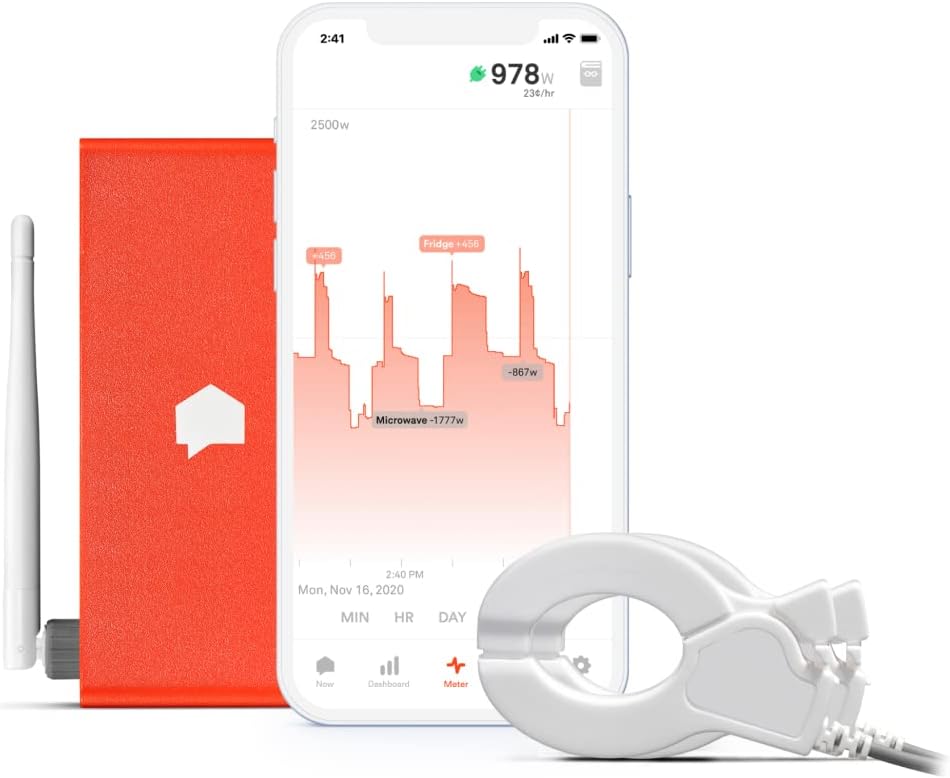
- What it is and What it Does: Energy monitors give you a detailed look at your home’s energy consumption in real time. Some models monitor your entire home’s electricity usage, while others can track individual appliances. They use sensors and machine learning algorithms to break down your energy use, providing valuable insights into which devices contribute the most to your bill. This information empowers you to make informed decisions about appliance upgrades, scheduling, and overall habits to reduce your energy footprint.
- How it Lowers Electricity Consumption: These trackers shine a light on where your energy dollars are going. By identifying the biggest energy-consuming devices or appliances with malfunctions, you can take targeted action. Often, the data will reveal wasteful “phantom” power, standby energy drawn by devices that are plugged in but not actively used. Energy monitors help you make changes in your habits and identify inefficient appliances, ultimately leading to a lower electricity bill.
- Product Examples:
- Sense Energy Monitor: This popular monitor can track real-time energy usage throughout your home and learn to identify individual appliances. Provides detailed usage reports and helpful savings tips.
- Emporia Smart Home Energy Monitor: Another excellent option that offers real-time energy monitoring and appliance-level detection. The sleek design is easy to install and its comprehensive app interface offers clear insights into how your home uses energy.
4. Smart Power Strips
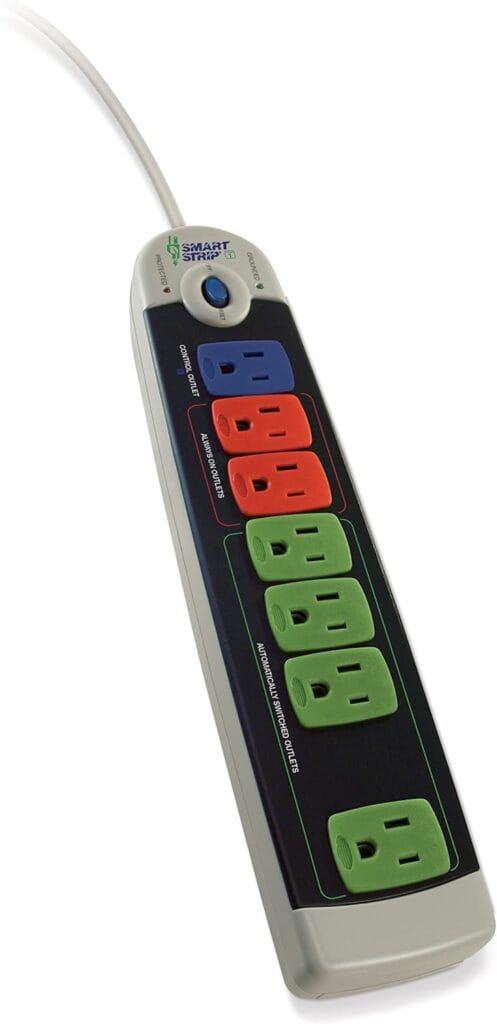
- What it is and What it Does: Smart power strips act like regular power strips with a brilliant twist. They are designed to eliminate “phantom” or “vampire” power – the energy consumed by plugged-in devices even when they appear to be “off”. Smart power strips have outlets that can be turned off using a remote control, a schedule, or even motion sensors. When devices aren’t in use, the power strip cuts off power supply entirely.
- How it Lowers Electricity Consumption: Phantom power might not seem significant for a single device, but it adds up, accounting for up to 10% of your annual electricity bill. Smart power strips turn the tables on this silent energy drain by completely eliminating standby consumption. Additionally, they protect your devices from power surges.
- Product Examples:
- Kasa Smart Wi-Fi Power Strip by TP-Link: This power strip features individually controllable outlets, allowing you to cut power to specific devices remotely or on a schedule. Works with Alexa and Google Assistant for voice control.
- Belkin Conserve Smart AV Power Strip: Designed with your home entertainment system in mind, this smart power strip uses a “master” outlet to control the power flow to other devices. When you turn off your TV (the master outlet), connected devices like soundbars and gaming consoles shut down automatically.
5. Programmable Water Heater Timer
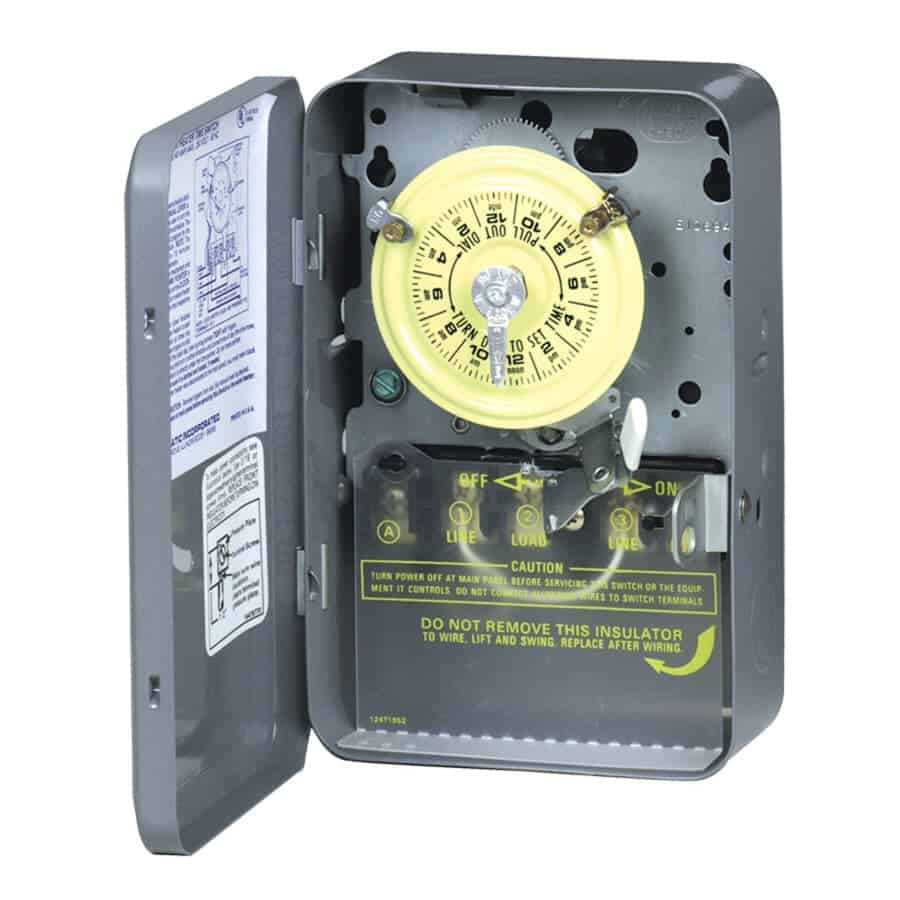
- What it is and What it Does: These handy devices attach to your existing water heater and give you precise control over when it operates. Programmable water heater timers allow you to set schedules for heating water based on your household’s actual needs. Many models include options for vacation modes, keeping an emergency reserve of hot water, and temporary overrides.
- How it Lowers Electricity Consumption: Water heaters are often one of the top energy consumers within a home. Water heater timers prevent your heater from running unnecessarily during periods when no one needs hot water. For example, you could schedule it to turn off during the day when everyone’s at work or at night when you’re asleep. By strategically timing your water heater’s operation, you can reduce the electricity used for heating water without sacrificing hot water when you need it.
- Product Examples:
- Intermatic EH40 Electronic 7 Day Water Heater Timer Switch: A reliable option with precise scheduling options and a robust 40A rating, it can handle both electric and gas water heaters.
- Rheem 24-Hour Mechanical Water Heater Timer: If you prefer a simple analog timer, this mechanical model is easy to set and is great for those who need basic scheduling features.
Understanding Energy Consumption
To effectively reduce your electric bill, it is crucial to have a clear picture of your home’s energy consumption and the cost associated with it. Recognizing the types of energy usage and the impact they have on your utility bills is the first step toward managing and reducing your expenses.
Measuring Your Electric Bill
Your electric bill is based on the amount of electricity you use, which is measured in kilowatt-hours (kWh). The Energy Information Administration provides standard electricity prices, but electricity prices can also vary by location, season, and the type of consumer.
- To start, gather your bills from the past few months.
- Look for your total kWh used which is the main component of your bill.
By tracking your monthly usage, you can begin to identify patterns or appliances that contribute significantly to your overall costs.
Types of Energy Usage
Energy usage in the home typically falls into two categories: constant and variable. Constant energy usage includes appliances that consume power around the clock, like refrigerators. Variable energy usage includes items like lights and televisions that are only on sometimes.
Constant Usage:
- Refrigerator: Always running
- HVAC system: May run frequently to maintain temperature
Variable Usage:
- Oven: Used occasionally
- Computer: Power usage changes with active use or sleep mode
Understanding these types can help homeowners in identifying which appliances are using the most energy and when, especially with the aid of real-time energy monitoring devices. These insights can be leveraged to make changes like adjusting usage patterns to offset electricity prices or investing in energy-efficient appliances.
Effective Solutions to Reduce Electric Bills
Reducing electric bills can be achieved through mindful usage and the integration of smart technology. LED light bulbs consume less energy compared to incandescent bulbs and last longer. They offer significant energy savings. Installing dimmer switches and motion sensors can further ensure lights are used only when necessary.
Smart thermostats allow for precise control of heating and cooling systems, learning preferences over time to optimize temperature settings for both comfort and cost. Similarly, smart power strips prevent phantom loads, cutting power to devices in standby mode and eliminating hidden energy drains.
Appliances with the Energy Star label are designed to be more energy-efficient than their standard counterparts. Individuals are encouraged to look for this label when purchasing new appliances or replacing old ones. Simple actions like lowering the water heater temperature and using energy-efficient showerheads can reduce water usage and consequently, energy bills.
Participating in energy audits can identify specific areas in the home where improvements can be made. Rebates and incentives for using Energy Star products can provide additional savings.
As technology advances, smart home devices, managed via smartphone or tablet, continue to gain popularity. Examples include Amazon Smart Thermostats and Google Nest Learning Thermostats, which can be controlled remotely, ensuring systems operate only when needed.
Lastly, an often overlooked strategy is to take advantage of time-of-use rates offered by some utility companies. These plans charge less for electricity during off-peak hours, which can result in lower utility bills for those who shift their high power usage to these times.
Frequently Asked Questions
When looking to lower your electric bill, certain devices can make a real difference. This section explores common concerns and offers insights into energy-saving solutions.
What are the best energy-saving devices for home use?
The top picks for home energy-saving include smart thermostats, LED bulbs, advanced power strips, and energy-efficient appliances. These devices help manage and reduce power consumption.
Are there any gadgets proven to cut an electric bill by a significant percentage?
Smart thermostats and energy-efficient appliances have been shown to curb energy usage. They adjust power consumption based on your habits and needs, providing noteworthy savings on electricity costs.
Is the notion of unplugging appliances to save energy based on fact or a myth?
It’s a fact that unplugging appliances, also known as energy vampires, when they’re not in use can lead to energy savings. Standby power can account for a portion of your electric bill.
What are the insights from Consumer Reports on electricity-saving devices like Pro Power Save?
Consumer Reports suggests that devices like Pro Power Save may provide some level of savings. However, their effectiveness can vary, and it’s essential to research specific products before purchasing.
How do electricity saving boxes work, and are they effective?
Electricity saving boxes claim to improve the power factor of household appliances, possibly leading to lower consumption. Their effectiveness is debated and may depend on individual home scenarios.
Which energy-saving solutions are endorsed by reputable experts or institutions?
Reputable experts and institutions often endorse smart thermostats, ENERGY STAR appliances, and LED lighting for their proven efficiency and effectiveness in saving energy.

